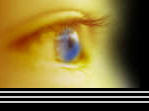|
1) Everyday Language- Interestingly, Kafka focused his story sharply using the dull, everyday language
of the common man. Not only did this amplify the shocking occurrence of Gregor
Samsa’s transformation, Kafka’s ordinary word choice also created an alternate reality for the reader. In addition, Kafka’s lack of verbose, lengthy descriptions simplified the novella in structure, at
the same time, adding a heightened depth to this psychological work. This type
of diction was a perfect choice for Kafka’s intentions: he wished to make an impact and portray his ideas without the
baggage and burden of “academia.” The lack of description triggers
signals in the reader’s mind as Kafka begins to use description during areas of emphasis (eg. the description of the
rage and anger of Gregor’s father, the condition of Gregor’s room), each of which has some other, internal meaning.
2) The Metaphor of the Cockroach- Why did Kafka use an insect (critics call it a cockroach, but the
word “cockroach” is never mentioned within The Metamorphosis) as the preferred beast that Gregor would
transform into? Firstly, the cockroach is dirty.
An insect that eats anything, including the vilest of trash, and a pest that humans have extreme difficulty in ridding,
the cockroach is one of the most disgusting insects known to man. To create a
shocking foil between the “human body” and Gregor’s new body, Kafka used the cockroach. However, what is even more interesting is that, as was mentioned previously, Kafka DOES NOT ever mention
the word “cockroach” in his novella. The reader is led to infer that
Gregor Samsa has transformed into some sort of ugly creature with many legs and a hard-shelled back. This hard shell could have been a metaphor for the mental barrier between Gregor and the world around him-
his hard exterior cannot be pierced and he is shut inside this cage/trap that is his own body.
The many legs touch upon the idea that although Gregor has legs, he cannot escape this trap; he can only struggle vainly. Does Gregor really ever transform? Or is he merely being himself- an insect, a cockroach? Gregor’s family never refers to him as “the insect,” only the cleaning
woman does that (and she seemed like a rude woman to all)…
3) The Symbol of The Apple- During the second chapter in The Metamorphosis, Gregor’s father
attacks Gregor angrily, bombarding the poor Gregor with fruit, one of which pierces Gregor’s back. This apple ends up rotting away in the hole that its impact made, becoming a part of Gregor’s shell. Yet, instead of strengthening Gregor, this apple weakens him, causing him pain whenever
he moved. Gregor is handicapped by this thrown apple. Here, we find the comparison between Gregor’s situation and that of the holy figure of Jesus Christ. Parallels continue till Gregor’s death in which he cannot help but love his
family despite all the pain they inflicted on him. Like a crown of thorns, a
ring of dust surrounds the infected area and the rotten apple (an apple that connects to the fruit from the Tree of the Knowledge
of Good and Evil- the first sin). Instead of the humane, loving Gregor eating
the apple, the apple is shoved back at him by his sinful, hateful father, causing a permanent scar in his perfection. Just as Jesus was God lowering himself down to the level of a sinful human, Gregor,
the caring cockroach, had been lowered down to a level that did not reflect his inner, pure thoughts. Thus, we see the sharp contrast; though humans were created in the image of God, we
see they are far from being godly. In fact, humans are the cockroaches in The
Metamorphosis, while the cockroach is more human than all.
4) Splitting the Novella Into Chapters-
Franz Kafka decided to split his work into three chapters. Each of these chapters
focus entirely on Gregor; the first two occur the moment he awakens and the last chapter talks generally of the Gregor’s
situation in the past month (which has passed, in the reader’s eyes, like a dream).
In addition, each chapter contains an attempt by Gregor to escape as he leaves his room in three separate occasions
(first, to chase after his boss; second, to reassure his mother; and third, in response to his sister’s violin playing). Each time, Gregor is successively more human, and each time, he is beat back. In the last chapter, Gregor finally returns to his room, voluntarily, having given
up on the hope of garnering love and affection from his family. His choice is
further reaffirmed when his sister nastily smashes the door shut, causing Gregor to lose his balance and fall to the floor
where he would later die peacefully. In a story split into three separate stories,
we see Gregor’s livelihood slowly deteriorating as he is continually rejected and beat back into the space made by four
empty walls. By the end, Gregor has given up on freedom; he no longer looks out
the small window like he used to in the first chapter.
When Gregor Samsa woke up one morning
from unsettling dreams, he found himself changed in his bed into a monstrous vermin...
|

